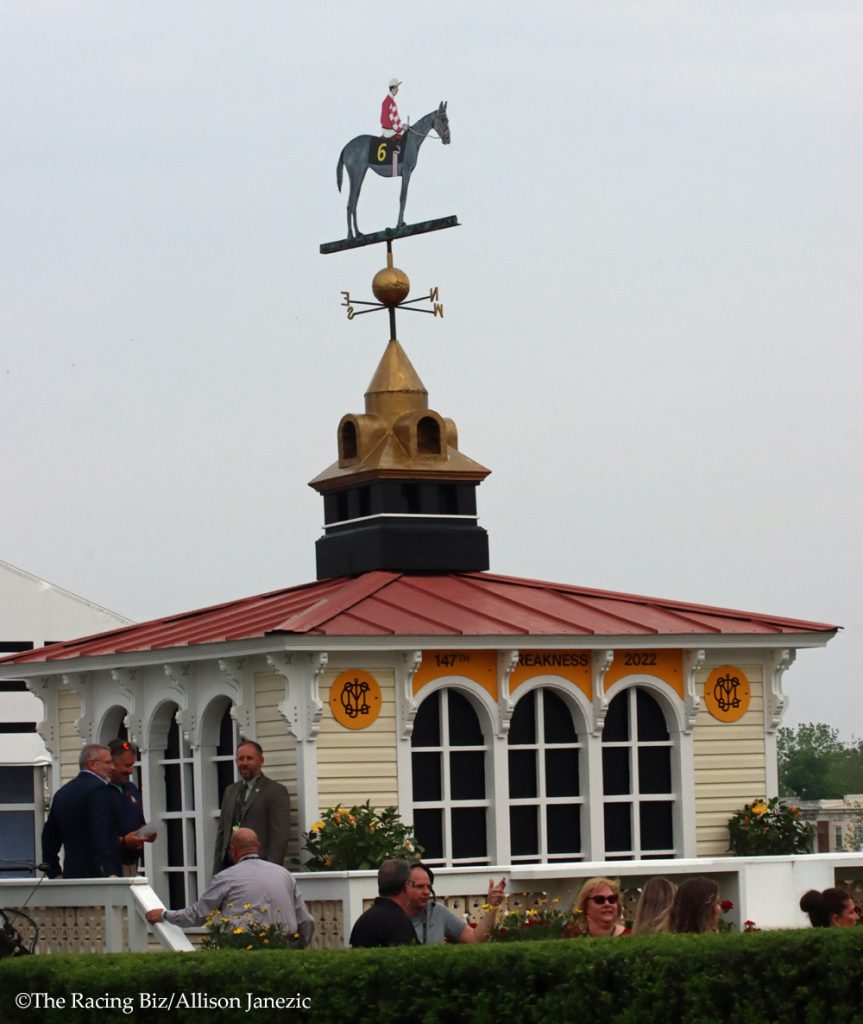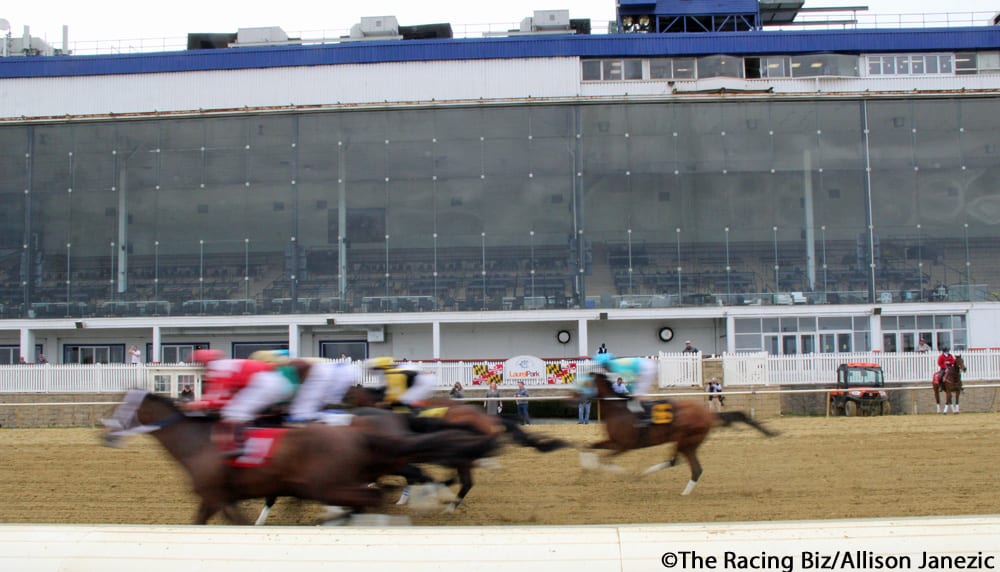Pimlico-Laurel project: The shape of things to come
When the Maryland General Assembly passed the Racing and Community Development Act in 2020, it was hailed by Thoroughbred industry insiders as “our Triple Crown.” The law provided the financial structure and wherewithal to permit the renovation of PImlico as a worthy home for the Preakness Stakes and the refurbishment of Laurel Park as a world-class everyday home to Maryland racing.
Or so it seemed.
Nearly three years later, there hasn’t been a shovel in the ground, the amount of money available is far short of what’s necessary, and the way forward is murky at best. The legislature in its 2022 session directed that several entities submit reports. Now the question is: what does it do with what it’s learned.
During September, reports examining the current state of the project, the feasibility of the state purchasing Laurel Park, and possible future models to organize racing in the state all were delivered. They portray an industry at something of an inflection point.
In this series, we examine some of the issues facing the project, long considered the linchpin of Maryland racing’s future.
A DIFFERENT MODEL
What will the Maryland Thoroughbred industry look like in a few years?
It’s hard to know, exactly, but one distinctly possible answer is this: substantially different from the way it looks today.
Determining an answer to that question is one of the many challenges the Pimlico-Laurel project has faced. It gets at global issues like who owns the tracks, and who operates the racing that takes place there.
For many years, Maryland’s major tracks have operated as private, for-profit companies with, since the 1980s, the two so-called “mile tracks” – Laurel Park and Pimlico – under one ownership, the Maryland Jockey Club.
A report submitted to the Maryland General Assembly by industry stakeholders – the Maryland Thoroughbred Horsemen’s Association, Maryland Jockey Club, and Maryland Horse Breeders Association – envisions a different model, which it calls “the Del Mar model.”
Under that approach, modeled after Southern California’s Del Mar race track, the state would buy from the Stronach Group the Laurel Park property, or at least a sufficient portion of it to house the lion’s share of racing and training taking place in Maryland. It would create a new entity, the Maryland Racetrack Operating Authority, which would then oversee a newly created nonprofit entity acting as the licensee operating the racetrack.

Why all the gyrations?
“Because of the [federal tax code section] 118 issue, the land has to be transferred to a governmental or nonprofit entity,” explained Alan Rifkin, an attorney representing the Stronach Group and its Maryland Jockey Club subsidiary.
Under the federal tax code, the improvements to Laurel envisioned in the 2020 Racing and Community Development Act would be taxed to the owner – currently the MJC – as capital gains. That could impose a tax liability of $40 million or more on the MJC, an amount which the stakeholders’ report characterized as “significant and unacceptable.”
If the Del Mar model were implemented, the Maryland Racing Commission would continue to function in a regulatory role, while the Operating Authority would be responsible for governance, oversight, the operating agreement and racetrack lease, and the development and implementation of a capital plan.
The nonprofit entity would be responsible for running day-to-day racing, maintaining facilities, submitting budgets and so forth, all under the eye of the Operating Authority. What that nonprofit would look like is not entirely clear, though multiple people close to the discussions said they did not think the horsemen’s group should play that role but that a new group should be formed.
“The recommendation we made, and it’s reflected in our report, is the Del Mar model,” said MTHA general counsel Alan Foreman. “At Del Mar, the state owns the land, and there is an operating entity that operates the racetrack and hires the management. That’s how it’s done. That’s how you could set up your own.”
Del Mar is one of the nation’s most successful racetracks, though its model – running high-end boutique meets in one of the country’s most beautiful locations – is considerably different from the 150-plus days Laurel would be expected to host each year.
“DAY-TO-DAY RACING IS NOT PROFITABLE”
There are other issues. The finances, for one.
“There’s no mystery that running day-to-day racing is not profitable,” Rifkin said. “And consequently there’s always a pressure on the day-to-day racing enterprise to make the kinds of judgments one often makes about whether or not there’s a better model, a more streamlined model that the horsemen can operate themselves.”
How not profitable is racing in Maryland? Another General Assembly-directed report, from the Maryland Economic Development Corporation (MEDCO), estimates it at “an annual loss of tens of millions of dollars.”
And then there’s the question of the Preakness. Under the Racing and Community Development Act, the Stronach Group will convey the Pimlico property to the City of Baltimore but be able to operate it for the springtime Preakness meet. The rest of the year, the property will be devoted to community uses.
One possibility, in other words, is that the Stronach Group would remain in Maryland to own and operate the Preakness meet but cede to others Laurel Park and control of day-to-day racing.

The Preakness meet has long been Maryland racing’s most important asset, generating interest, attention, and profits that have helped bankroll the year-round schedule. The MEDCO report, for one, envisions the new operating entity structure as also in charge of the Preakness.
Foreman agrees that that’s desirable, calling the Triple Crown’s Middle Jewel “a celebration of Maryland racing.”
But the most attractive scenario would involve both a willing buyer and a willing seller in the Stronach Group. That does not seem likely.
“We’re always going to have Preakness and PImlico,” Rifkin said, adding, “There is a distinction between the Preakness meet, Preakness, and live day-to-day racing.”
The MEDCO report projects that racing in Maryland could reach “at least a breakeven situation” financially, but that’s with “revenue from the Preakness Stakes.” Without it, it’s hard to see that scenario unfolding.
All of this leaves significant issues to be tackled. If the parties decide to pursue something like the Del Mar model, what will it cost to purchase the Laurel property, and where will the money come from? Will the General Assembly balk at splitting the Preakness off from the rest of racing? If not, will it be tolerant of supporting a day-to-day product likely to lose money?
And that’s to say nothing of longer term concerns, like the structure and composition of the nonprofit group or the very real challenges of completing the rebuild of the two facilities.
The 2023 legislative session kicks off January 11. By then, a lot of questions will need answers.
You can read the three reports the General Assembly mandated at the Dept. of Legislative Services website. They are:
LATEST NEWS














